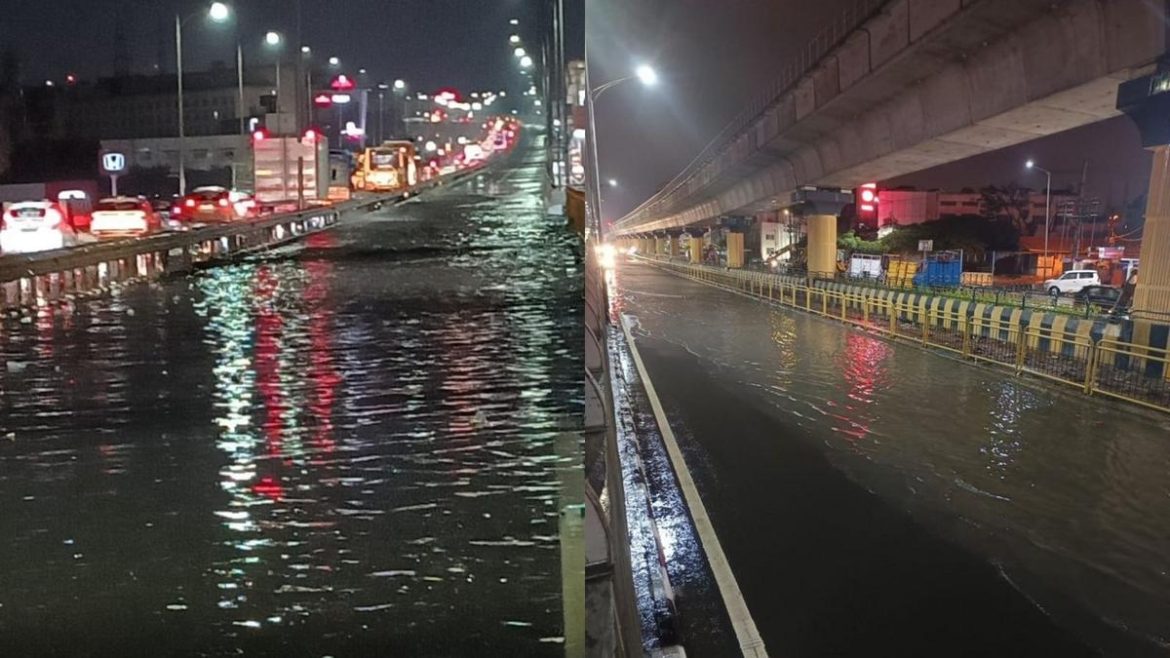Heavy Rain Paralyzes Bengaluru Commute Once Again
If you’ve ever tried to navigate traffic in Bengaluru during monsoon season, you probably won’t be too shocked by this update. But this time, it hit a bit harder than usual. Overnight rains battered the city, and one of the worst-hit areas was the Electronic City flyover—a crucial corridor for daily tech commuters. Flooding shut it down early this morning, disrupting traffic flows and triggering a domino effect of jams across major junctions.
What Happened Overnight?
The rain started late last night and continued well into the early hours. While Bengaluru is no stranger to sudden evening showers, this episode brought something more—a deluge that caught both residents and municipal officials off guard. According to the Indian Meteorological Department (IMD), the city recorded over 80 mm of rainfall between midnight and 4 a.m.
“Winds picked up around 1:30 a.m., and by 2:45 a.m., the water levels started climbing on the flyover. Vehicles had to slow down or stop entirely,” said a local traffic constable posted near the Electronic City toll plaza.
Key Stretches Affected
The Electronic City flyover wasn’t alone. Several low-lying neighborhoods were hit hard by waterlogging. Commuters in the following areas saw the worst of it:
- Koramangala 80 Feet Road
- BTM Layout
- Sarjapur Road and HSR Layout
- Bellandur and Outer Ring Road
- Whitefield Main Road near Hope Farm
Videos circulated online this morning showed vehicles struggling to move through ankle- to knee-deep water. In some places, even buses had to reroute because entire stretches were submerged.
Traffic Snarls and Commuter Chaos
I think most of us have learned to factor in some delays when it rains. But today was different. Many tech workers and office-goers were stuck for hours. Google Maps showed red lines across the length of Outer Ring Road by 7:00 a.m., and commute times jumped from 30 minutes to over two hours in some cases. School buses running through these stretches also reported major delays.
Public transport didn’t fare much better either. BMTC buses were stuck at many junctions, and some were forced to cancel trips. Auto rickshaw fares, as expected, skyrocketed quickly.
Why Bengaluru Keeps Flooding
This made people curious: why does a well-known tech hub face something like this repeatedly? The short answer is poor urban planning and overloaded stormwater drains. According to civil engineer Ramesh Acharya, “Our drainage systems just aren’t being updated to match the city’s rapid growth. Concrete replaces open land, and the rain has nowhere to go.”
Here’s a brief breakdown of the contributing factors:
- Unregulated urban development in flood zones
- Narrow and poorly maintained stormwater drains
- Encroachments reducing natural water discharge routes
- Rising population without matching civic upgrades
I think it’s fair to say that everyone’s aware of these issues, but the fixes? They come slowly, if at all.
BBMP Reacts, But Critics Aren’t Buying It
The Bruhat Bengaluru Mahanagara Palike (BBMP) issued a quick statement in the morning claiming that water pump teams had been dispatched and de-flooding work was under way. “Our emergency team is clearing blockages at multiple choke points. We expect traffic to normalize in 3–4 hours,” the statement read.
Still, many residents see this as too little, too late. Social media was full of criticism, with users posting pictures of submerged roads and calling for accountability.
Looking at Short-Term Safety Tips
In moments like this, it helps to know what to do if you get caught in one of these flash flood situations. Here are a few safety suggestions:
- Avoid driving through waterlogged roads, especially underpasses
- Keep your phone charged and carry a power bank
- Check Google Maps or a traffic app before leaving
- Drive slowly—water may hide potholes
- Have emergency numbers saved locally
Long-Term Fixes Are Needed
Many believe what’s happening now is just going to repeat unless there’s real investment in basic infrastructure. A few urban planners suggest integrating better stormwater management systems and enforcing design norms on new constructions.
“There has to be a rhythm between growth and civic design,” said Sushma Das, an urban planning researcher, in a city-wide webinar earlier this year. “Concrete jungles without ecology make disasters like this more likely, not less.”
What Locals Are Saying
Here’s a snapshot of what commuters and residents had to say today:
- “Left at 6:30 a.m., reached office at 10:15 a.m. Pathetic.” – Kiran, IT professional.
- “Water entered our parking area overnight. Had to fish out both my scooters this morning.” – Anjali, resident of HSR Layout.
- “One day of rain and everything breaks down. What is BBMP doing?” – Mohan, Whitefield entrepreneur.
So, What Happens Now?
Authorities promise more rapid response units and stricter construction checks, but many locals feel like little changes. The memory of today’s chaos might fade, but the problem? It’ll probably return with the next spell of rain.
Until infrastructure is taken seriously—not just road expansions or flyovers, but proper drainage and water planning—many believe Bengaluru will continue to drown a little every time it pours.
Takeaway
Rainfall can’t be stopped. But floods? They don’t need to happen this often. Bengaluru has the tech, the talent, and the funds. What it needs now, maybe more than anything else, is political will matched with smart design and solid execution. Until then, pack an extra pair of socks the next time skies go dark.

